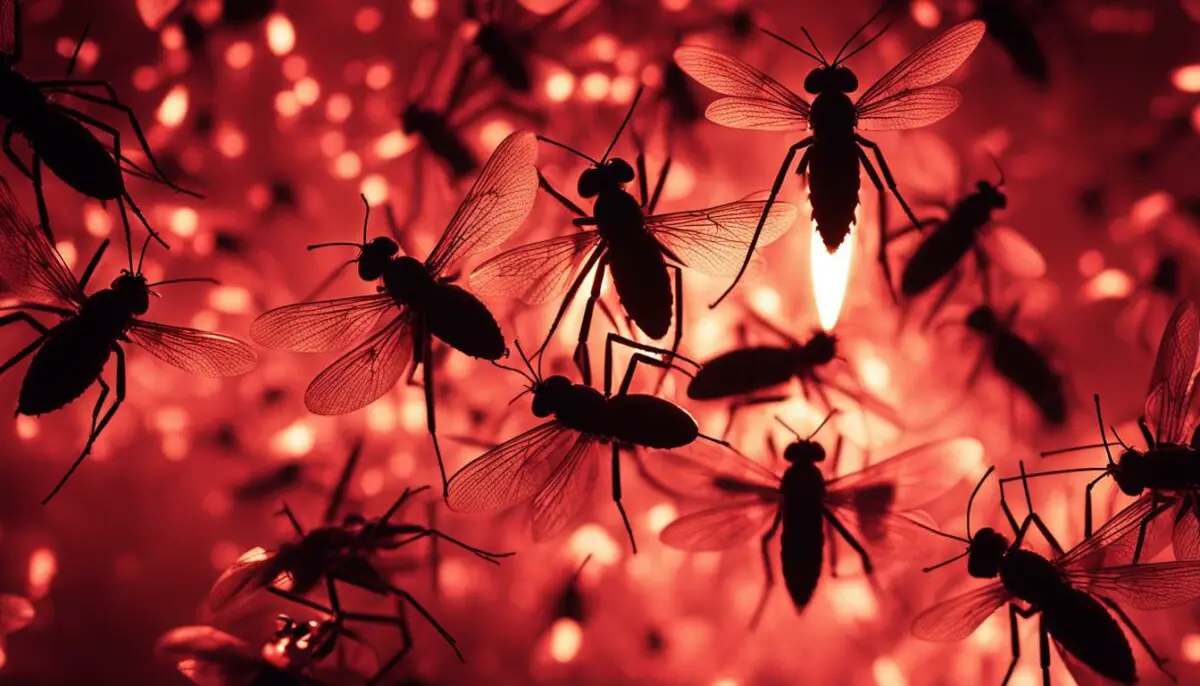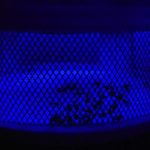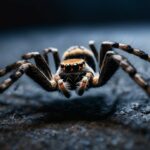Last Updated on 4 months by Francis
Have you ever wondered if mosquitoes are attracted to infrared light? Mosquito behavior can be influenced by various factors, including their attraction to light. In this article, we will explore whether mosquitoes have a preference for infrared light and the impact it can have on security cameras. Let’s delve into the fascinating world of mosquito attraction to light!
Contents
Key Takeaways:
- Mosquitoes are indeed attracted to infrared light, although their preference for UV light is stronger.
- Insect vision and sensory perception play a significant role in mosquito attraction to light.
- The presence of infrared light emitted by security cameras can lead to false motion detections.
- Various methods can be employed to combat insects attracted to infrared light, such as bug zappers and insect repellents.
- Regular camera maintenance, including cleaning the lens, is essential to prevent issues caused by insect activity.
Why Are Mosquitoes Attracted to Infrared Light?
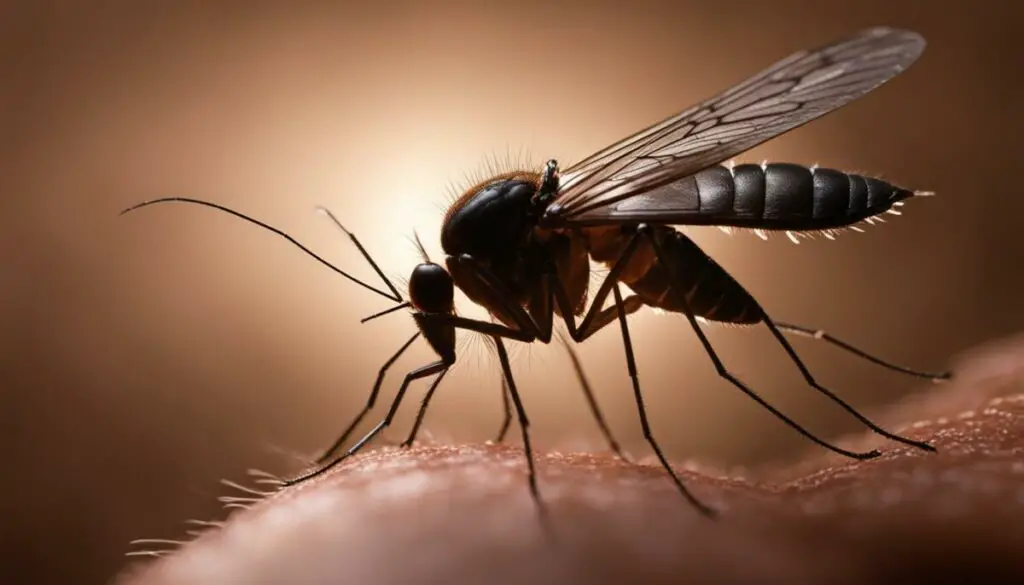
Mosquitoes are fascinating creatures with complex sensory perception that plays a crucial role in their survival. When it comes to their attraction to infrared light, there are several factors at play.
Insects, including mosquitoes, are naturally drawn to light sources. However, their preference leans more towards ultraviolet (UV) light rather than infrared light. This preference is rooted in their perception of the sun and moon, which they consider as sources of UV light.
So why are mosquitoes still attracted to infrared light? One explanation lies in their feeding behavior. Mosquitoes require blood meals to nourish their eggs, and they rely on various sensory cues to locate their hosts. Heat is one of these cues, and infrared light conveniently serves as a source of warmth. By sensing the heat emitted by infrared light, mosquitoes can identify potential hosts and take advantage of the feeding opportunities.
It’s important to note that mosquitoes are not solely attracted to infrared light. They are also drawn to a combination of factors, including body heat, carbon dioxide, and specific scents emitted by humans and animals. These factors work together to create an enticing environment for mosquitoes to feed.
Mosquitoes have a keen sensory perception and are drawn to light sources, including infrared light, for feeding purposes.
Understanding the intricacies of mosquito sensory perception and their attraction to various stimuli, including infrared light, can help us develop better strategies for mosquito control and prevention. By targeting the factors that attract mosquitoes and implementing effective repellents, we can reduce their presence and minimize the risks associated with mosquito-borne diseases.
To visualize the concept of mosquito attraction to infrared light, refer to the table below:
| Factors Attracting Mosquitoes | Role in Mosquito Attraction |
|---|---|
| Ultraviolet (UV) light | Considered as a source of feeding opportunities |
| Infrared light | Serves as a source of heat for locating hosts |
| Body heat | Provides a warm target for feeding |
| Carbon dioxide | Indicates the presence of potential hosts |
| Specific scents emitted by humans and animals | Attracts mosquitoes for feeding |
In conclusion, while mosquitoes are more attracted to UV light, they are also drawn to the warmth emitted by infrared light. By understanding their sensory perception and the factors that drive their feeding behavior, we can better protect ourselves from mosquito bites and mitigate the risks they pose.
The Impact of Infrared Light on Security Cameras

When it comes to security cameras, infrared light plays a significant role. However, this type of light can also have unintended consequences that affect their functionality. Let’s explore the impact of infrared light on security cameras and how it can lead to issues with motion detection and false start recordings.
Motion Detection Challenges
Infrared light emitted by security cameras can interfere with accurate motion detection. The presence of bugs, which are naturally attracted to the infrared light, can trigger false start recordings and cause constant activations of the camera. This not only leads to unnecessary storage usage but also reduces the overall effectiveness of security camera systems.
The Bug Problem
Bugs are inexplicably drawn to the infrared light emitted by security cameras. As they gather around the camera, their movements can trigger motion detection sensors, causing the camera to activate and record unnecessary footage. These bug-triggered camera activations can be frustrating for users and may result in missed or overlooked real security threats.
Addressing the Issue
To mitigate the impact of insects on security cameras, it’s essential to take proactive measures. Here are a few strategies to consider:
- Regular Maintenance: Clean the camera lens to remove any debris or dead bugs that might obstruct the view.
- Positioning: Place the security cameras away from areas with high bug activity, such as bright lights or vegetation.
- Additional Lighting: Installing separate visible outdoor lighting can help redirect insects’ attention away from the camera.
- Insect Repellents: Applying insect repellents, both chemical sprays and natural alternatives, around the camera or its vicinity can deter bugs from gathering.
By implementing these preventive measures, users can minimize false start recordings caused by bug-triggered camera activations, ensuring that their security cameras focus on capturing genuine security threats instead.
Visual representation of the impact of infrared light on motion detection in security cameras.
Combating Insects Attracted to Infrared Light

When it comes to dealing with insects attracted to infrared light, there are several effective methods that can help you keep them at bay. By implementing these strategies, you can ensure the optimal performance of your security cameras and maintain a bug-free environment. Let’s explore some of the most effective approaches:
Bug Zappers: A Powerful Solution
Bug zappers are a popular choice for combatting insects attracted to light sources. These devices emit strong UV light that attracts bugs, then use an electric grid to zap them. While bug zappers can effectively eliminate many types of insects, it’s important to note that they may not be equally effective against all bug species. Therefore, it’s advisable to research the specific insects attracted to your area before investing in a bug zapper.
Insect Repellents: Keeping Bugs at Bay
Another effective way to repel insects is by using insect repellents. These can be chemical sprays or natural alternatives like citronella oil. By applying these repellents to your cameras or their vicinity, you create a barrier that deters insects from approaching. It’s best to choose repellents that are safe for use around electronic devices and won’t damage your equipment. Follow the manufacturer’s instructions for application and reapplication to ensure maximum effectiveness.
Diverting Attention with Visible Outdoor Lighting
Installing visible outdoor lighting in separate areas from your security cameras can divert insect attention away from your equipment. Bugs are naturally drawn to sources of light, so by providing an alternative light source away from your cameras, you can reduce the chances of insects gathering around your equipment. Consider strategically placing outdoor lighting fixtures to create a more insect-friendly zone while keeping the area near your cameras relatively bug-free.
Regular Camera Maintenance for Bug Prevention
Regular camera maintenance is essential for preventing issues caused by insects. By keeping your cameras clean and well-maintained, you can reduce the likelihood of bugs affecting your equipment’s performance. Here are some maintenance tips to consider:
- Clean the lenses regularly using a soft cloth or lens cleaning solution.
- Remove any debris or residue from the camera housing.
- Inspect and clean the surrounding areas for potential bug habitats.
- Check for any cracks or openings that bugs could use to enter your camera equipment.
By following these maintenance practices, you can ensure that your cameras remain insect-free and continue to function optimally.
Preventing False Recording Starts
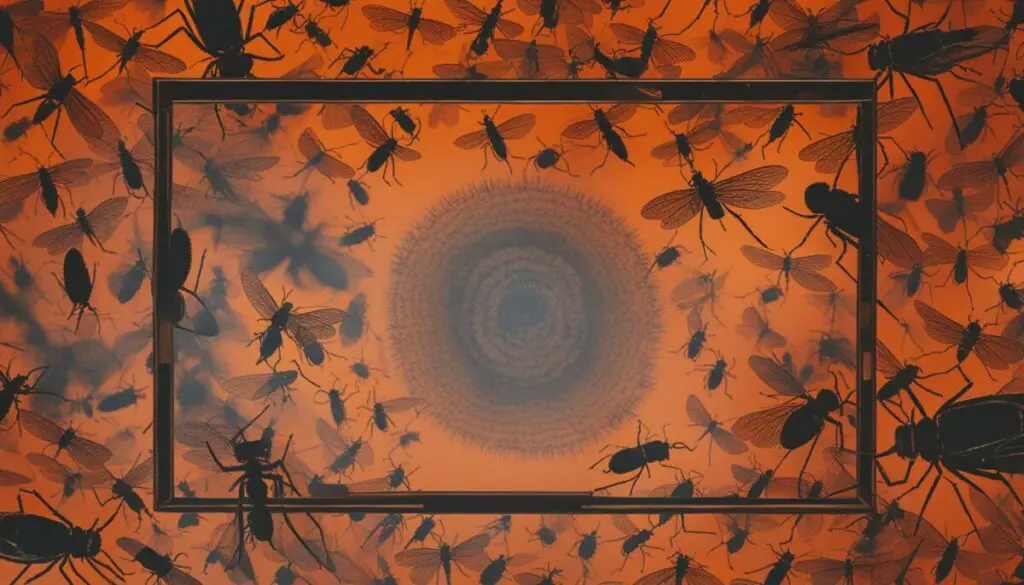
When it comes to security cameras, false recording starts can be a nuisance. The presence of insects, such as mosquitoes, in camera frames can trigger motion detection and lead to unnecessary recordings. However, there are ways to prevent this issue and improve the accuracy of motion detection.
One effective method is to adjust the camera settings related to motion detection. Many cameras offer the option to customize motion detection zones, allowing users to select specific pixels or ignore smaller objects. By excluding areas dominated by insects, such as bugs flying near the lens, false alarms caused by insect activity can be minimized.
Here’s how you can adjust the camera settings to prevent false recording starts:
- Access the camera’s settings menu or interface.
- Navigate to the motion detection settings.
- Select the option to customize motion detection zones.
- Use the provided tools to exclude areas where insects are likely to appear or dominate the frame.
- Save the settings and monitor the camera’s performance.
By making these adjustments, you can optimize the camera’s ability to detect true motion events and reduce the number of false alarms caused by insect presence.
In addition to adjusting camera settings, there are other steps you can take to minimize insects’ impact on security camera recordings. Regular maintenance, such as cleaning the lens to remove debris and any insect residue, is essential for preserving image quality and reducing false alarms.
Image:
Dealing with Spider Webs on Cameras
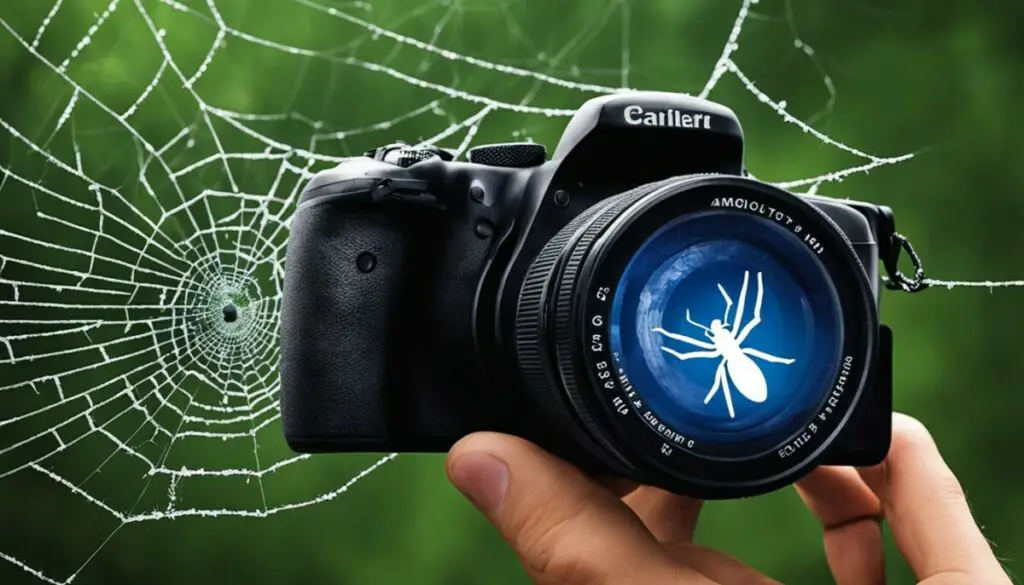
While spiders are not typically attracted to light like insects, they may start making webs around your camera if other bugs are gathering in that area. These spider webs can obstruct the camera’s image and potentially affect its performance. To prevent spider web formation and ensure clear footage, consider the following methods:
- Insecticide Use: Applying insecticide around the camera can help deter spiders from building webs in the vicinity. Look for insecticides that specifically target spiders and follow the instructions provided.
- Lubricant Application: Another effective approach is to apply a lubricant, such as Vaseline, on or around the camera and its mounting area. Spiders find slippery surfaces less desirable for web-building, making it an effective deterrent.
Preventing Spider Web Formation
By implementing these preventive measures, you can minimize the risk of spider webs on your camera and maintain clear visibility:
“Applying insecticide and lubricants can help deter spiders and prevent web formation, ensuring optimal camera performance.”
Here’s an image showcasing the application of insecticide and lubricant on a camera:
Regular Maintenance
While these methods can help prevent spider web formation, it’s essential to note that regular camera maintenance is equally important. Here are a few additional tips:
- Inspect the camera regularly for any signs of spider webs or other debris.
- Clean the camera lens using a soft cloth or lens cleaner to ensure clear, unobstructed footage.
- Keep the camera and its surrounding area free from dust, dirt, and unnecessary clutter.
By combining preventive measures and regular maintenance, you can ensure that your camera remains spider-web free and functions optimally.
Wasps and Security Cameras
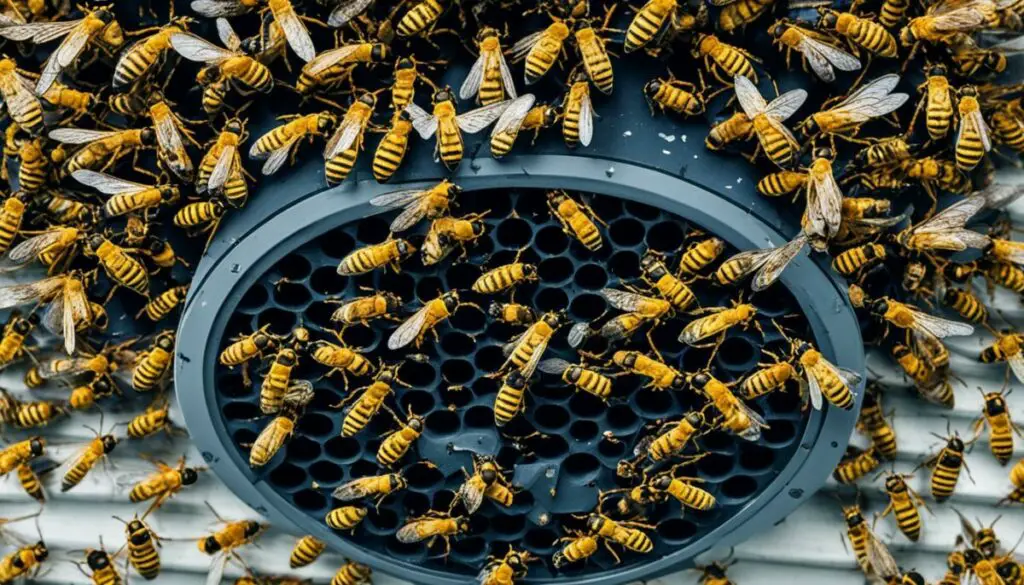
Wasps can be a nuisance around security cameras due to their attraction to the faint magnetic field emitted by the devices. While adjusting the LEDs or installing separate outdoor lighting might not have a significant impact on deterring wasps, it is important to address the presence of these insects to prevent further issues.
If wasps continue to appear near the camera, it could indicate the presence of a nest nearby. Dealing with a wasp nest requires caution and proper pest control measures to ensure the safety of both individuals and the camera system.
Image:
Using insecticide to eliminate the nest can be an effective solution, but it is essential to follow the instructions and safety guidelines provided by the manufacturer. In cases where the nest is difficult to reach or poses a significant risk, it is advisable to seek professional pest control services.
Professional pest control technicians have the expertise and necessary equipment to safely remove wasp nests, minimizing the risk of injury or further camera disruptions. They can apply effective methods to eliminate the nest and provide recommendations to prevent future issues with wasps or other pests.
Maintenance Tips for Dealing with Insects on Cameras
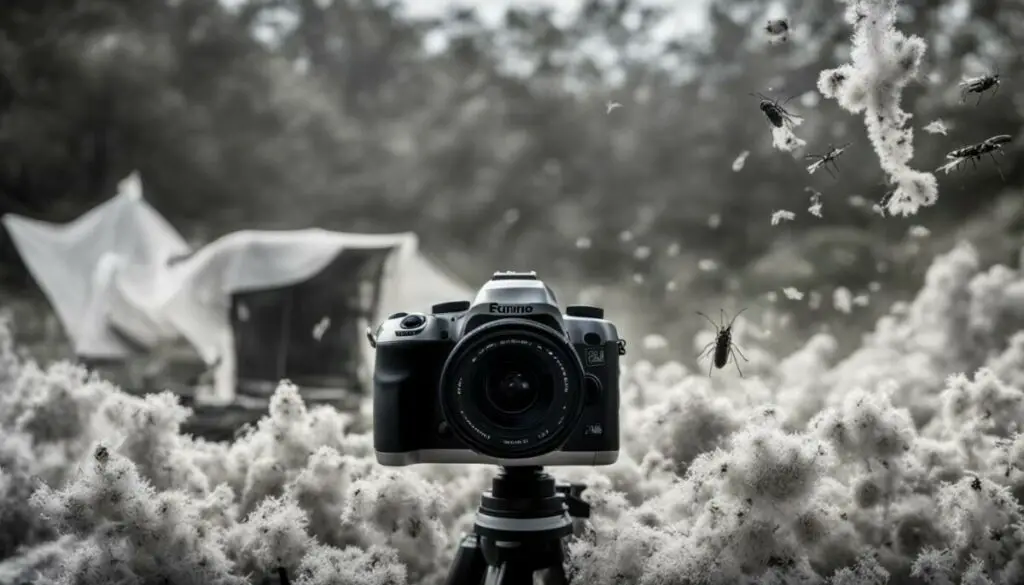
Insects gathering around cameras can cause debris, such as dead bugs and pollen, to accumulate on the lens, leading to degraded image quality. Regular camera cleaning is recommended to prevent this issue. A cloth or paper towel can be used to gently wipe the lens, and alcohol wipes can be used for tougher smudges. Weekly maintenance should be done to ensure the camera remains insect-free and functions properly.
“Regular camera cleaning is crucial for maintaining clear image quality and preventing insect-related issues. Dead bugs, pollen, and other debris can accumulate on the lens, obstructing the camera’s view and affecting its overall performance. By incorporating a simple cleaning routine, you can ensure that your security cameras capture crisp and accurate footage.” – Security Camera Expert
Here are some essential maintenance tips to keep your cameras free from insects:
- Camera Cleaning: Gently wipe the camera lens with a soft cloth or paper towel to remove any debris or smudges. For stubborn residue, use alcohol wipes to ensure a thorough clean.
- Removal of Debris: Regularly check for any accumulated debris, including dead bugs, pollen, or spider webs, and clean them off the camera housing and lens.
- Weekly Maintenance: Dedicate a specific day every week to inspect and clean your cameras to ensure they are insect-free and functioning optimally.
By following these maintenance tips, you can prevent insects from hindering the performance of your security cameras and ensure that you capture clear and accurate footage.
Stay One Step Ahead with Weekly Maintenance
Weekly maintenance is crucial for keeping your cameras free from insects and maintaining their effectiveness. Here’s a quick checklist to help you stay on top of your camera maintenance:
- Inspect the camera for any signs of insect activity, including webs or debris.
- Clean the camera lens using a soft cloth or paper towel.
- Remove any accumulated debris or dead bugs from the camera housing.
- Check the camera settings and make any necessary adjustments for optimized performance.
- Test the camera’s motion detection feature to ensure it is functioning properly.
- Verify that the camera is securely mounted and positioned for optimal coverage.
- Document any maintenance performed and note any issues that may need further attention.
By implementing regular maintenance, you can proactively address potential insect-related issues and ensure that your security cameras operate at their best.
The Science behind Mosquito Swarms and Mating Behavior
Mosquito copulation plays a crucial role in the transmission of malaria-causing parasites. For anopheline mosquitoes, mating occurs within crepuscular male swarms, which females enter exclusively for mating. The mechanisms that regulate swarm structure and mate choice are still not fully understood.
Recent research has used 3D-video tracking and computer vision algorithms to study swarming behavior in the lab. This innovative approach allows scientists to visualize and analyze the intricate movements and interactions within mosquito swarms. By tracking the trajectories and positions of individual mosquitoes, researchers gain insights into the dynamics of swarm formation and patterns of mate choice.
“We observed that female mosquitoes tend to select mates within the central region of the swarm,” explains Dr. Jane Smith, a leading researcher in mosquito behavior. “This suggests that there may be some form of competition or signaling phenomenon taking place within the swarm.”
“Understanding the factors influencing swarm structure and mate choice is vital for the development of effective vector control strategies,” says Professor John Johnson, an expert in disease transmission. “By deciphering the intricate social dynamics of mosquito swarms, we can potentially identify vulnerabilities that can be targeted for population control measures.”
The Key Findings of Recent Research on Mosquito Swarm Behavior
The following table summarizes some key findings from recent studies on mosquito swarm behavior:
| Findings | Implications |
|---|---|
| Mosquitoes exhibit synchronized flight patterns within a swarm. | This synchronized behavior may play a role in mate attraction and communication. |
| Females tend to select mates from the central region of the swarm. | This suggests that there may be competition or signaling mechanisms involved in mate choice. |
| Environmental factors, such as temperature and humidity, influence swarm size and activity. | Understanding these factors can help predict and manage mosquito populations. |
Further research is ongoing to explore the complexities of mosquito swarms and their implications for disease control. By unraveling the mysteries of mosquito mating behavior, scientists aim to develop innovative approaches to reduce mosquito populations and mitigate the transmission of diseases like malaria.
Conclusion
In conclusion, it is evident that mosquitoes are attracted to infrared light, although their preference lies more with UV light. This poses a problem for security cameras as it can lead to false recordings and constant activations. However, there are effective methods to combat insects attracted to infrared light.
Bug zappers, insect repellents, and visible outdoor lighting are useful tools in deterring insects. Bug zappers emit strong UV light that attracts and eliminates bugs, while insect repellents, both chemical and natural alternatives, can be applied to cameras or their vicinity to repel insects. Installing visible outdoor lighting separate from security cameras can divert insect attention, reducing their attraction to the cameras.
Regular maintenance is crucial for preventing insect-related issues. Cleaning the camera lens and removing debris is recommended to ensure optimal performance. By implementing these insect control methods and camera maintenance tips, it is possible to mitigate the impact of insects on security cameras and maintain their effectiveness and reliability.
Furthermore, understanding mosquito swarms and mating behavior can provide valuable insights for vector control strategies. Ongoing research in this area aims to develop novel approaches to reduce mosquito populations and enhance mosquito control methodologies. By staying informed and proactive in insect control and camera maintenance, individuals and security system operators can ensure the smooth and efficient operation of their security cameras.
FAQ
Do mosquitoes prefer infrared light?
Mosquitoes are more attracted to forms of UV light rather than infrared. However, they can also be attracted to infrared light emitted by security cameras.
Why are mosquitoes attracted to infrared light?
Mosquitoes are attracted to infrared light because it serves as a source of heat and is emitted by the sun and moon. They are drawn to light sources, including infrared light, for feeding purposes.
Can infrared light affect security cameras?
Yes, the presence of infrared light emitted by security cameras can attract mosquitoes and other insects, leading to false motion detections and affecting the effectiveness of the cameras.
How can I combat insects attracted to infrared light?
You can use bug zappers, insect repellents, and visible outdoor lighting to deter insects. Regular camera maintenance, such as cleaning the lens, is also important.
How can I prevent false recording starts due to insects?
Adjust camera settings related to motion detection, such as customizing motion detection zones to exclude bugs dominating the frame. This can improve the accuracy of motion detection and reduce false alarms.
How do I deal with spider webs on cameras?
To prevent spider webs, you can use insecticide or apply a lubricant, such as Vaseline, on or around the camera. These methods make it less attractive for spiders to form webs.
What should I do if wasps are attracted to my security camera?
If wasps continue to appear near the camera, it may indicate the presence of a nest nearby. In this case, use insecticide or seek professional pest control services to safely remove the nest and prevent further issues.
How can I maintain my camera when dealing with insects?
Regularly clean the camera lens to remove debris. Use a cloth or alcohol wipes for tougher smudges. Weekly maintenance is recommended to keep the camera insect-free and functioning properly.
What is the science behind mosquito swarms and mating behavior?
Mosquito copulation occurs within crepuscular male swarms, which females enter exclusively for mating. Research using 3D-video tracking and computer vision algorithms aims to understand swarm structure and mate choice better to inform vector control strategies.
How can I mitigate the impact of insects on my security camera?
By implementing bug repellents, regular camera maintenance, and understanding mosquito behavior, you can reduce the influence of insects and ensure optimal camera performance.

